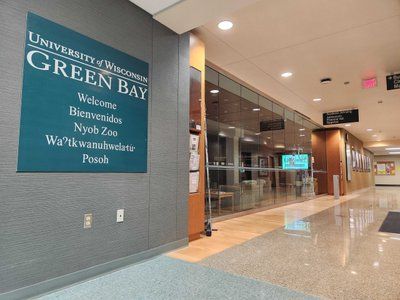By Tom Still
MADISON, Wis. – When a leading West Coast “think tank” examined how well colleges and universities are turning research into patents, companies and products, a somewhat surprising name appeared on the list.
Ranked 125th in the nation, in a neighborhood with Texas Tech, the New Jersey Institute of Technology, San Diego State, the UW-Milwaukee and Oklahoma, was the WiSys Technology Foundation.
Based on issued patents, licensing agreements, licensing income and startups, the rankings by the California-based Milken Institute showed that WiSys – which was created to manage intellectual property on University of Wisconsin campuses outside Madison and Milwaukee – is coming into its own.
Combined with other trends tied to campus research, that’s encouraging news for communities that might otherwise feel outside the circle of the larger innovation economy.
The 15th annual “Posters in the Rotunda” showcase, set for April 11 in the state Capitol, will feature about 100 exhibits by undergraduate students and their faculty advisors on topics ranging from health and manufacturing, and from natural resources to computing.
While the state’s doctoral universities are the main sources of research activities, the 11 comprehensive campuses also are churning out ideas – including some that display commercial and company creation potential.
WiSys is helping those universities move ideas from the lab bench to the marketplace. Created as an offshoot of the Wisconsin Alumni Research Foundation, which has handled UW-Madison invention disclosures and licenses for more than 90 years, WiSys performs a similar role for the rest of the UW System outside the UW-Milwaukee.
It manages disclosures from professors, other faculty and students; obtains patents where possible; and supports inventors as they move toward licensing their ideas or building a company.
Invention disclosures on UW System campuses outside the Big Two in Madison and Milwaukee have climbed steadily of late, with 64 invention disclosures in the 2016-17 fiscal year. Twelve patents have been issued and others are in the pipeline; three licensing deals were executed; about $611,000 in grants were awarded and about a dozen other campus-based proposals were funded.
Executive director Arjun Sanga, who came to Wisconsin after working in similar technology transfer roles in Texas and Kansas, has expanded the role of WiSys through outreach on individual campuses and through regional directors that understand links to industry.
WiSys has also facilitated student contests to tease out the best ideas and created a corps of “student ambassadors” to help engage their colleagues in what it means to be a researcher, inventor or entrepreneur.
The rise of WiSys and the research efforts of individual campuses serves as a reminder that state policymakers underfund the R&D missions of colleges and universities at the state’s economic peril.
While economists don’t often agree on much, there’s not much dissent over the notion that research universities contribute to the prosperity of cities, regions and states around them. Studies by the Federal Reserve Bank and others have cited the power of academic research and development in the economy, from direct spending tied to such research to the transfer of knowledge to companies of all sizes to the “human capital” that comes with creation of a highly skilled workforce.
Non-doctoral campuses can play a larger economic role if the power of undergraduate research evolves. That includes making sure faculty have the time to engage in research and even company creation.
Faculty members at non-doctoral schools won’t have as much time to conduct research if teaching loads become heavier, and the value of what they teach will be diminished if there’s not a balance of research and “service,” which is broadly defined but includes starting young companies.
The last state budget stabilized the UW System budget in some important ways, but it will take reinvestment over time – and the loosening of some state administrative requirements – to help campuses perform at a higher level.
Wisconsin’s economy may not feel the difference next year or even the next, but continued investment in basic research will reap local and regional rewards over time. A strong system is emerging to help pull out the best campus ideas; let’s invest in it.
Still is president of the Wisconsin Technology Council. He is the former associate editor of the Wisconsin State Journal.





